Last year someone built another solar road in Germany, this time for bicycles, as the one in the Netherlands. Opening:
November 11, 2018(image caption: "Germany's first solar road near Cologne")
Movie about it, on the website of the company which built it:
https://www.solmove.com/der-erste-solar-radweg-ist-in-erftstadt-eroeffnet/The movie was produced by RTL, a private television station. They say in the video it was funded with EUR 784,000 by the Bundesumweltministerium (Federal Environment Ministry), which is wrong. I contacted the city government and got the official information about the costs: The EUR 784k was support for multiple projects in Erftstadt, like creating other completely new bicycle ways. The solar installation costs about EUR 150k, 90% funded by the ministry and 10% by the city. But this is only planned, so far the city didn't pay anything, because they have to do this only after inspection and approval. It is all funded by Solmove at the moment. See
here for the full answer.
February 18, 2019. It is producing energy, but still nothing fed into the public grid, because they forgot to submit some regulatory papers.
About a month later it finally failed:
March 26, 2019(image caption: "The solar cycle path must not be used at the moment. Tarpaulins protect the modules from the sun.")
April 4, 2019, more information about the defect, probably water in some of the connectors caused a smouldering fire.
August 6, 2019: I took a look at it today (click on the image for the full resolution unedited photo with camera and GPS info), still not working:
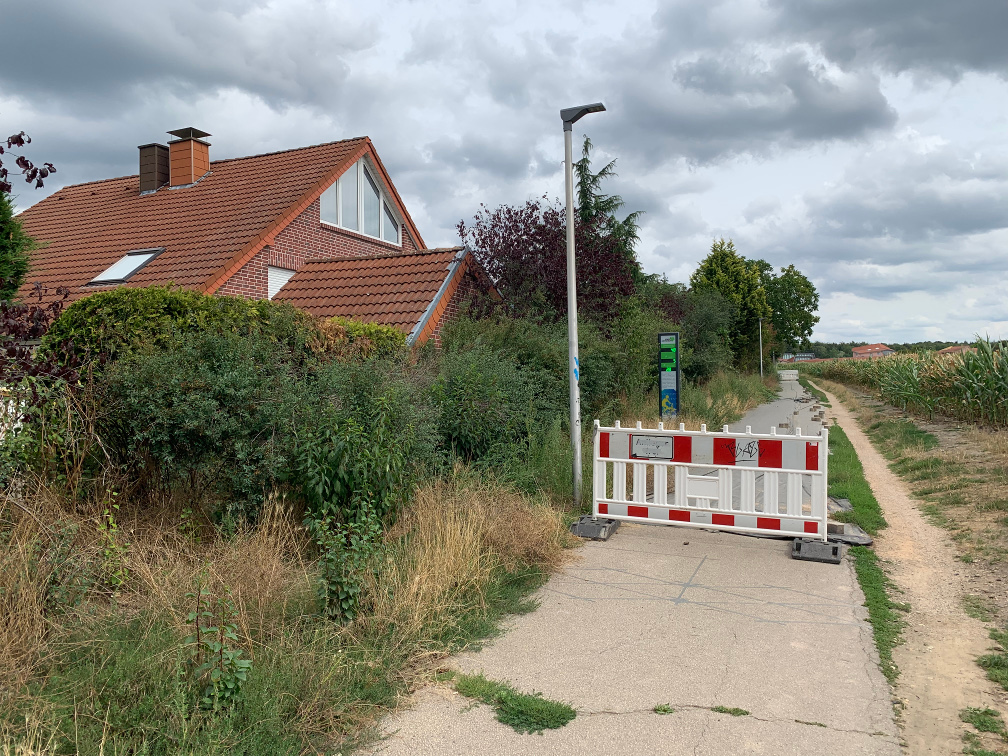
Looks like the pedestrians took it in their own hand regarding the path must not be used

And note the house to the left with the big roof, without solar cells.
This is the location (Copyright Google Maps), the 90m solar way marked in blue:
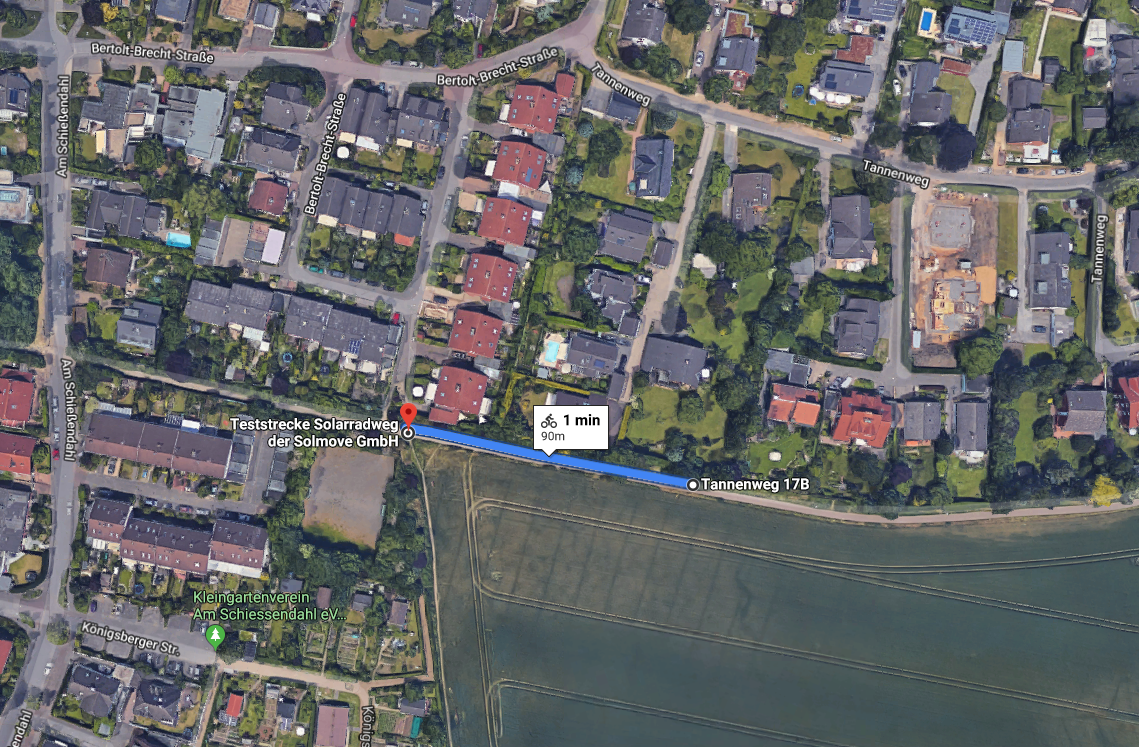
Note again all the roofs without solar cells. Top is north. This image might be old, but I couldn't see much more solar cells on roofs today. So much for low-hanging fruits.
Different angle:
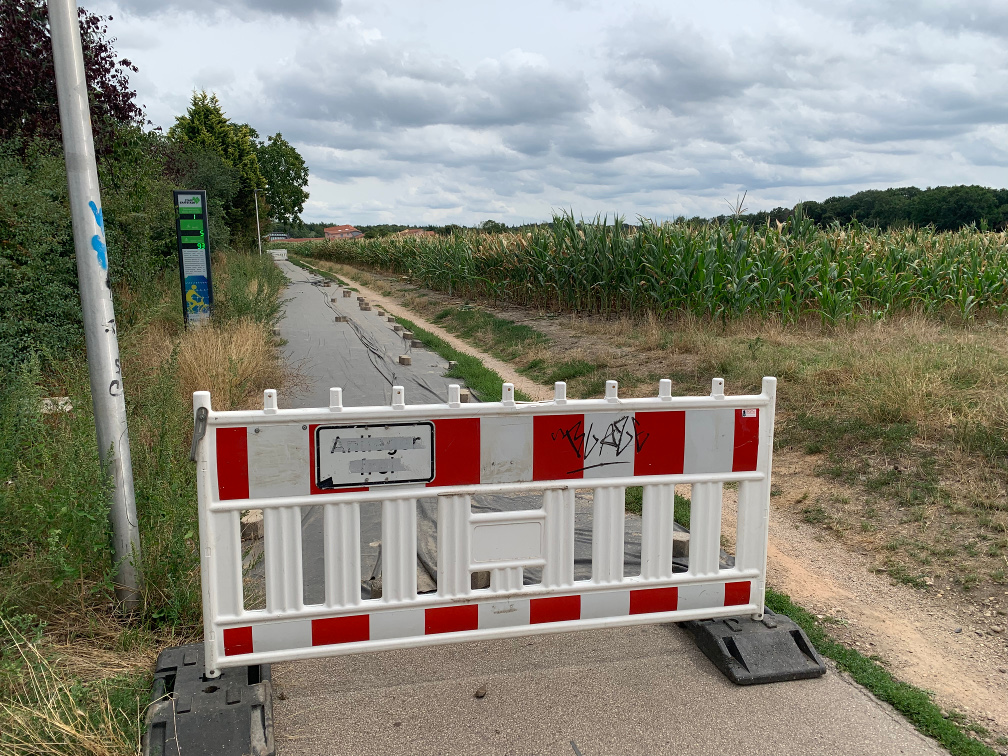
The sign:
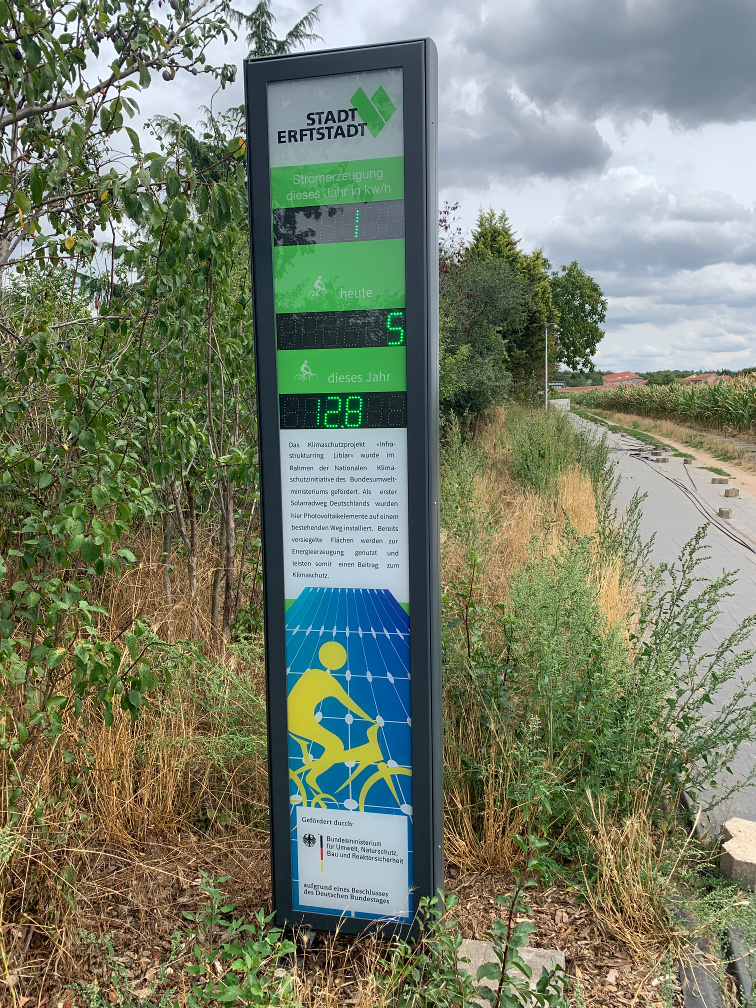
Note the wrong labeling: "Stromerzeugung dieses Jahr in kw/h" (power generation this year in kw/h). It is kWh.
Taking a look under the tarps:
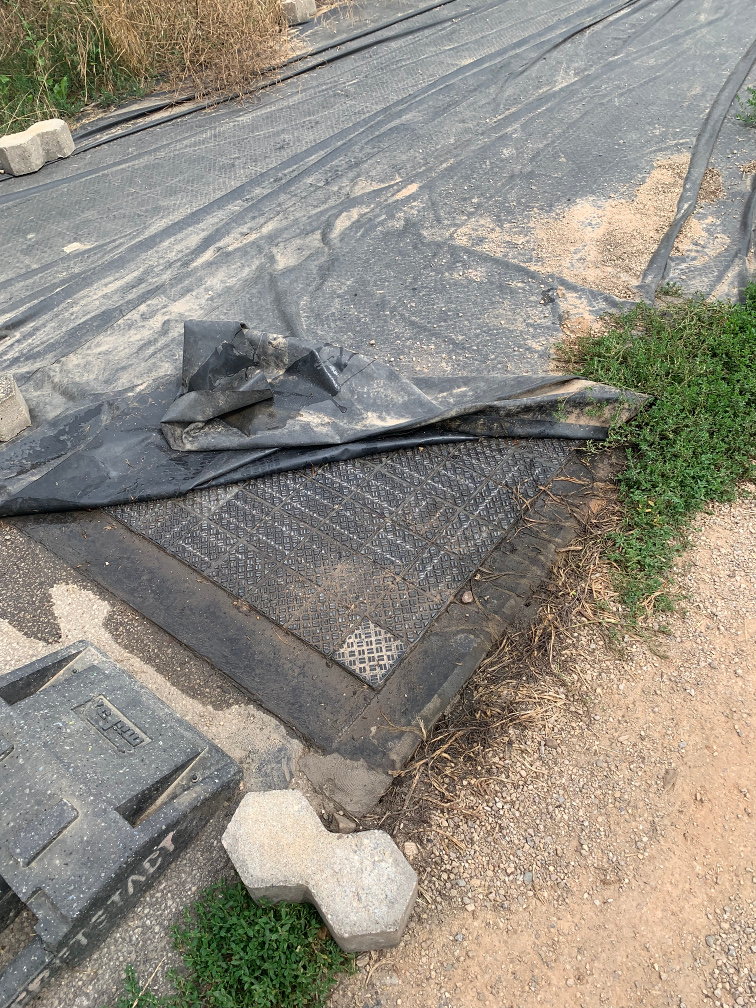
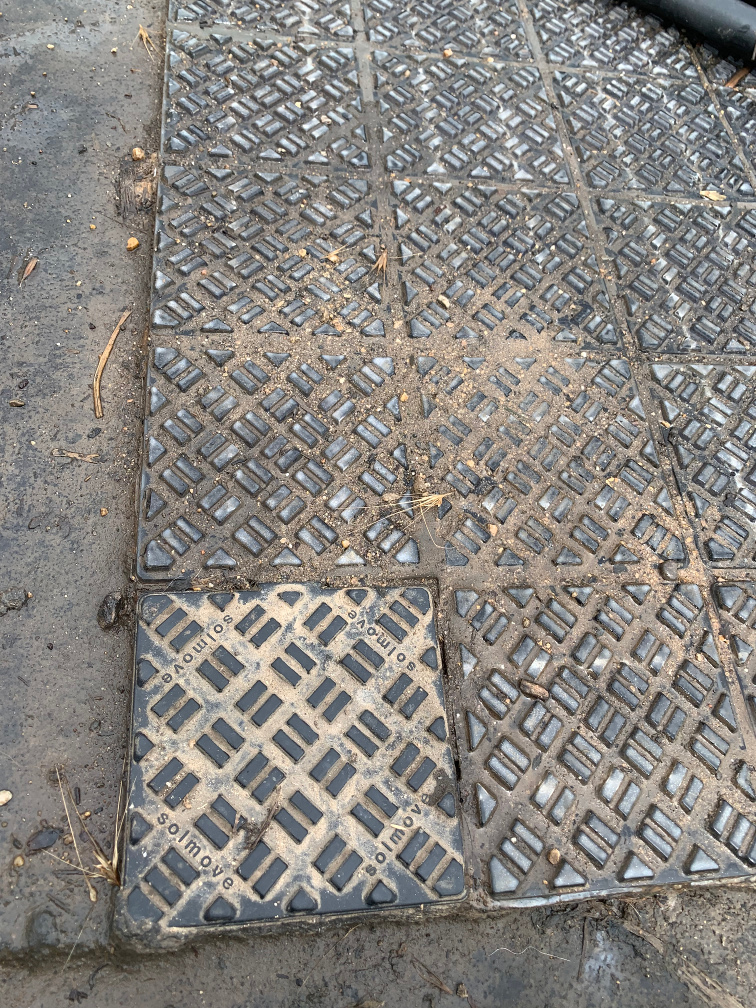
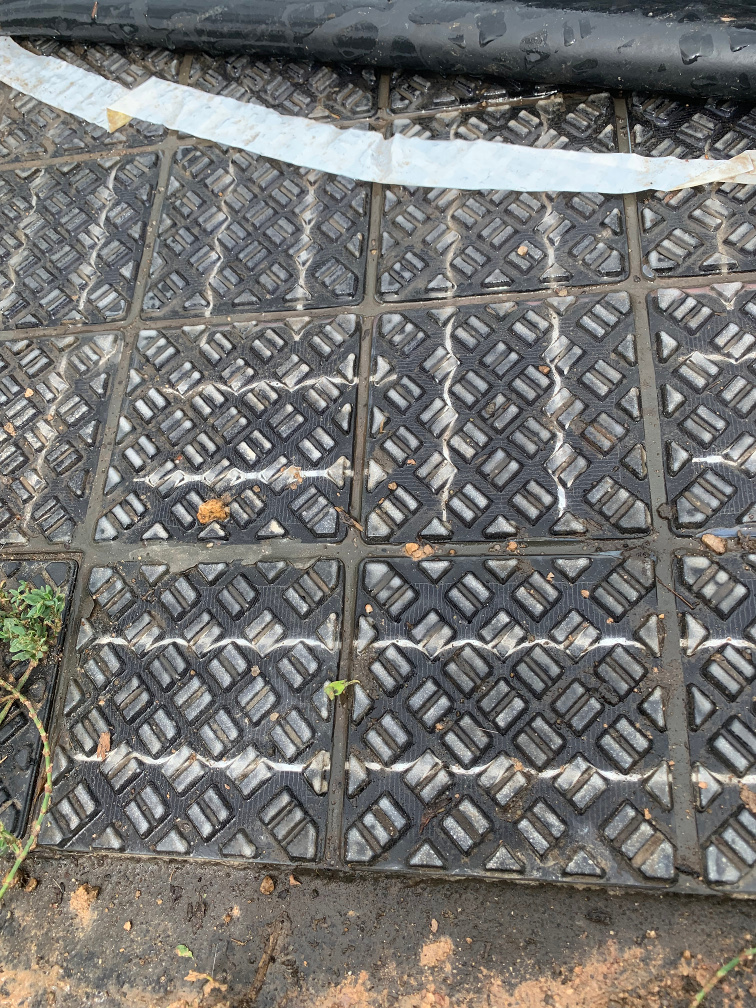
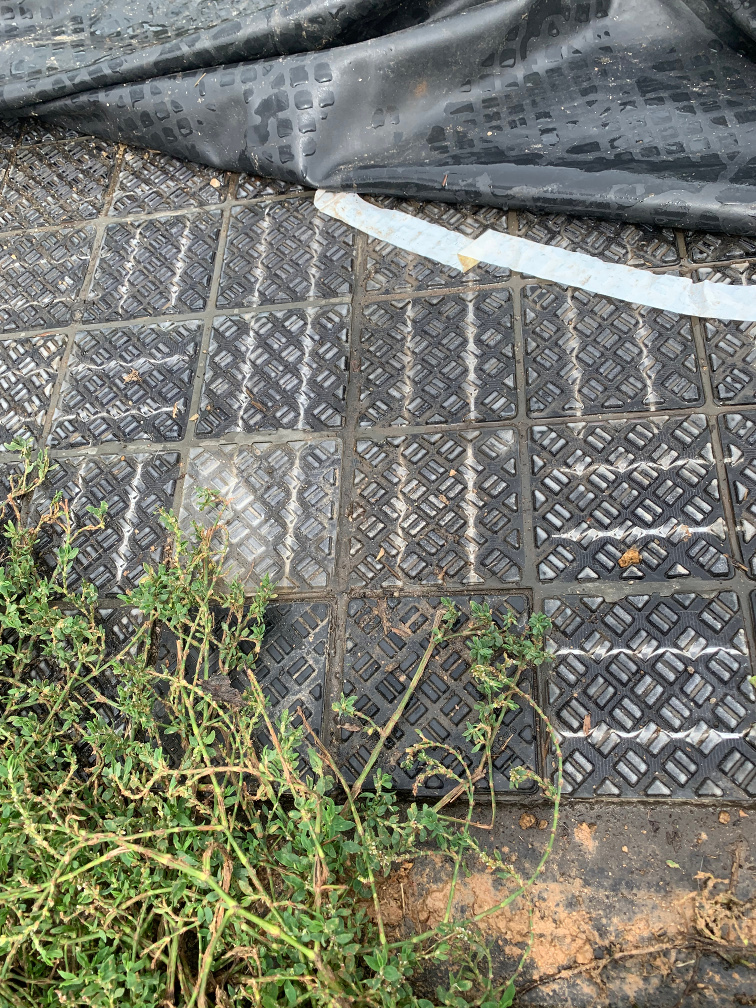
The other end. Looks like the tarps don't cover it all to the end, I didn't remove anything at this side.
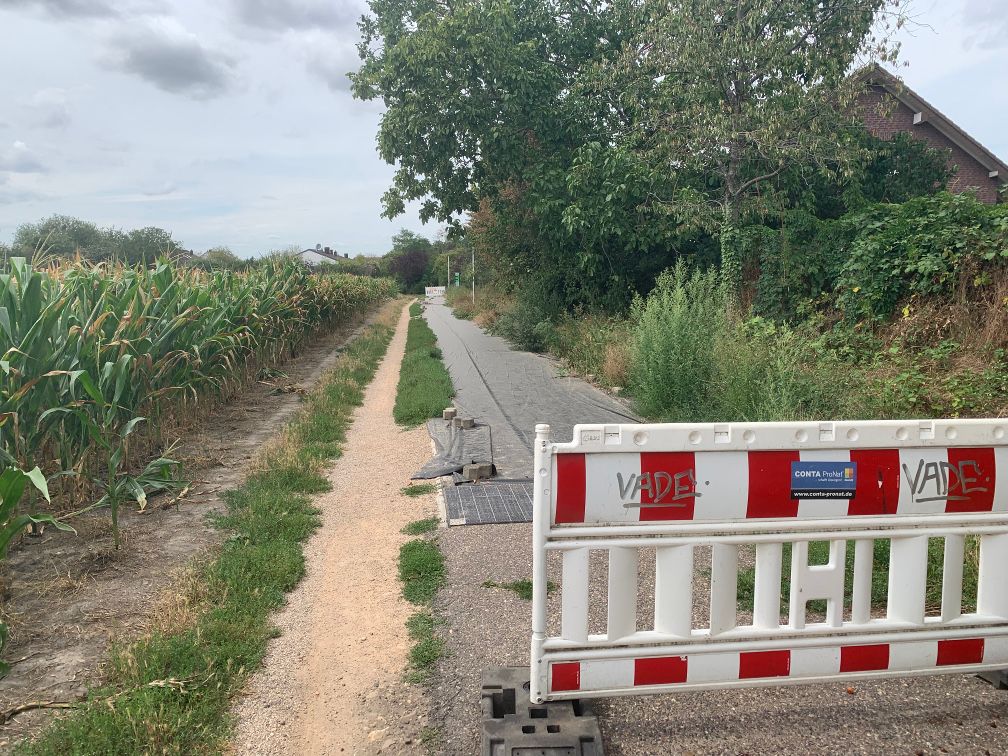
Close-up of the other end. Don't know what this is, maybe some broken cells?
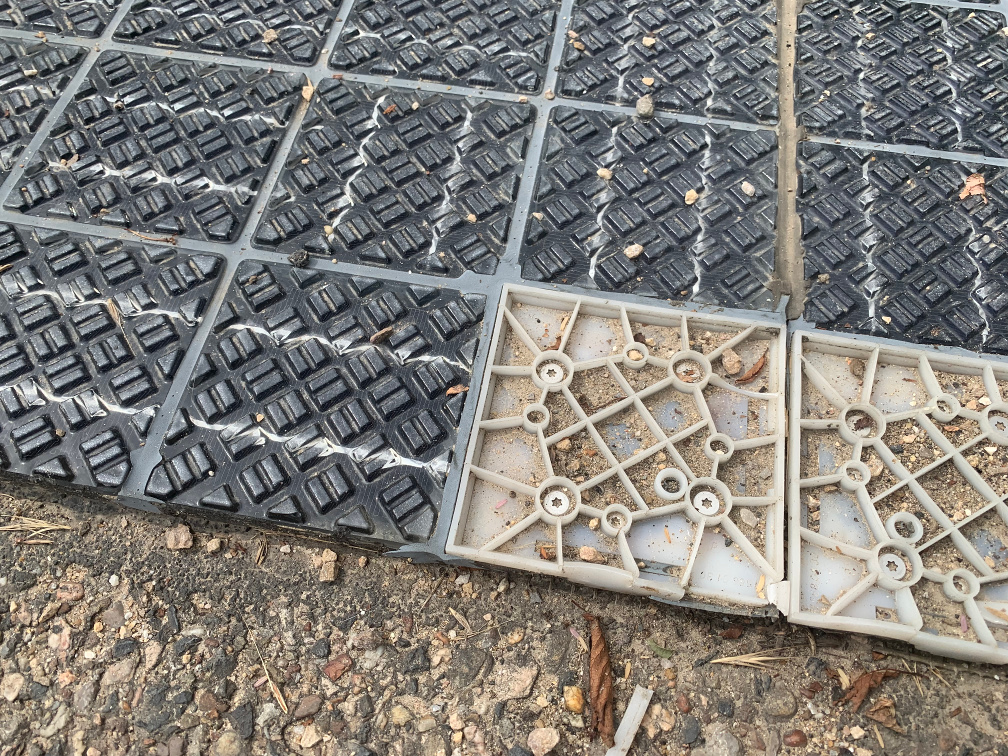
The seal doesn't look too good either:
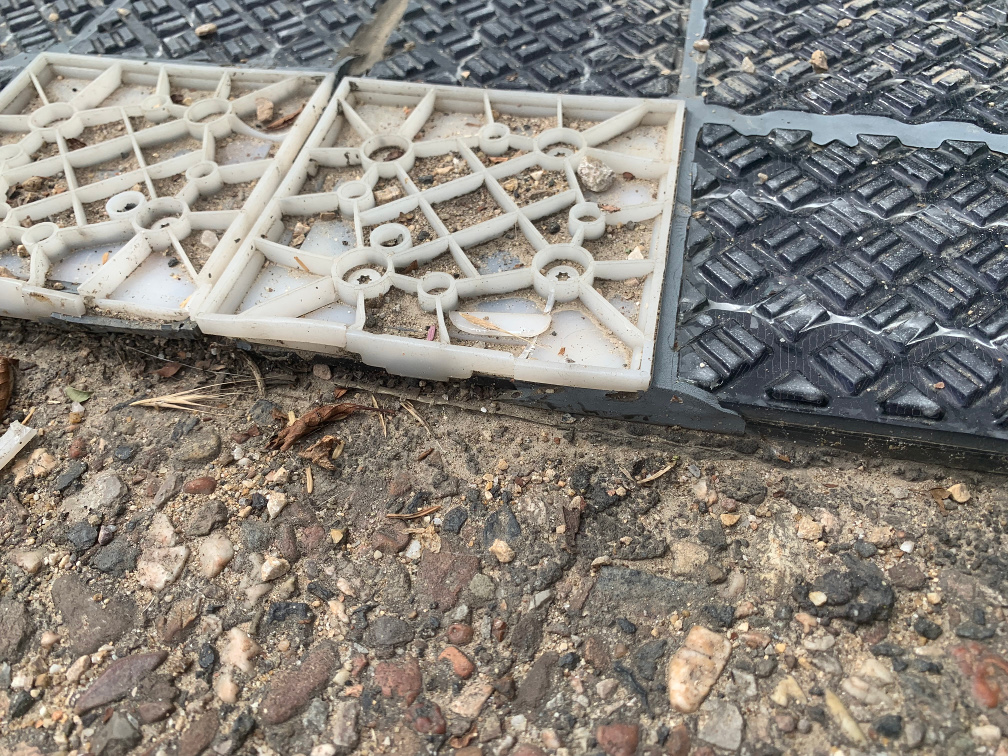
It looks awful with all the dirt. I think the solar cells are only between the bumps, as you can see here:
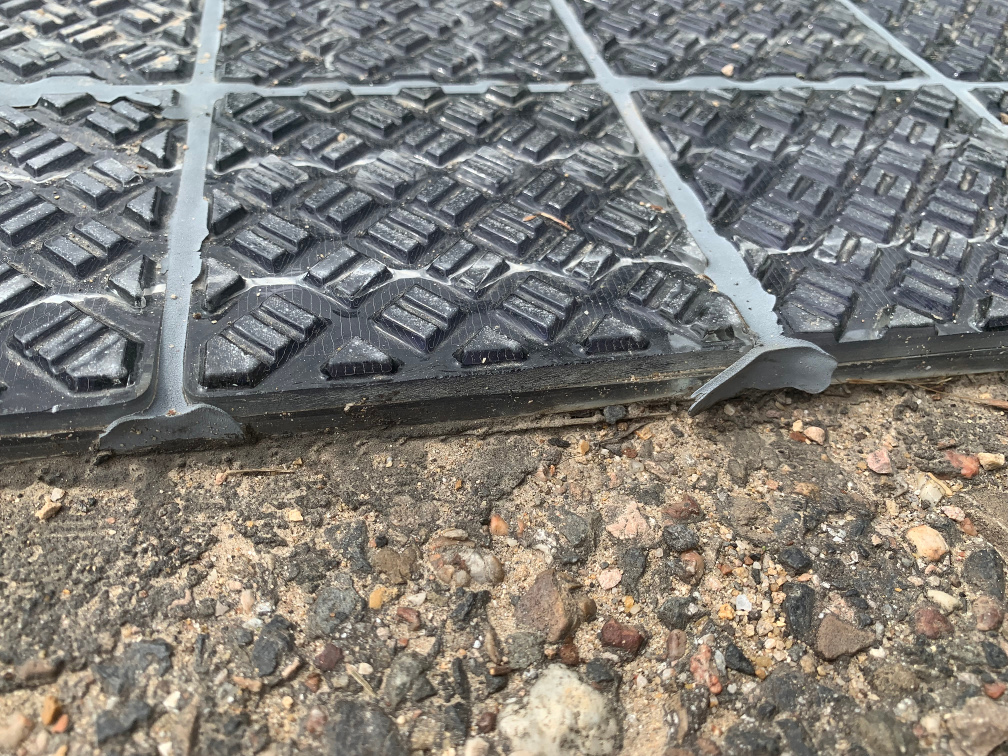
This would mean that nearly no power is generated if it is getting dirty.
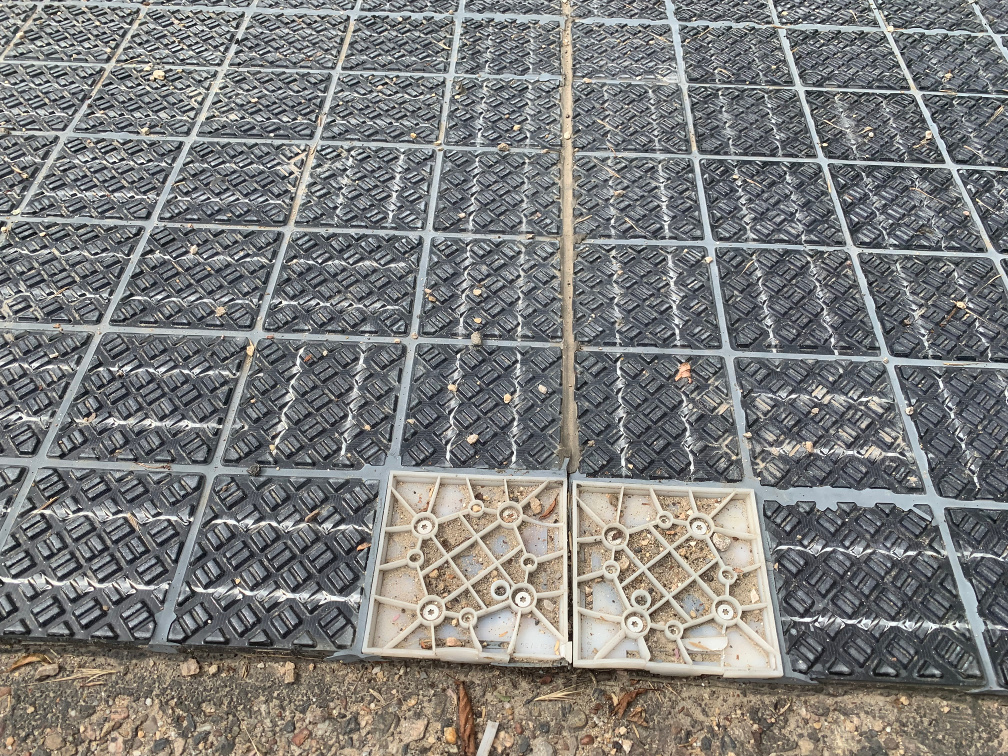
Overview at the other end, different angle:
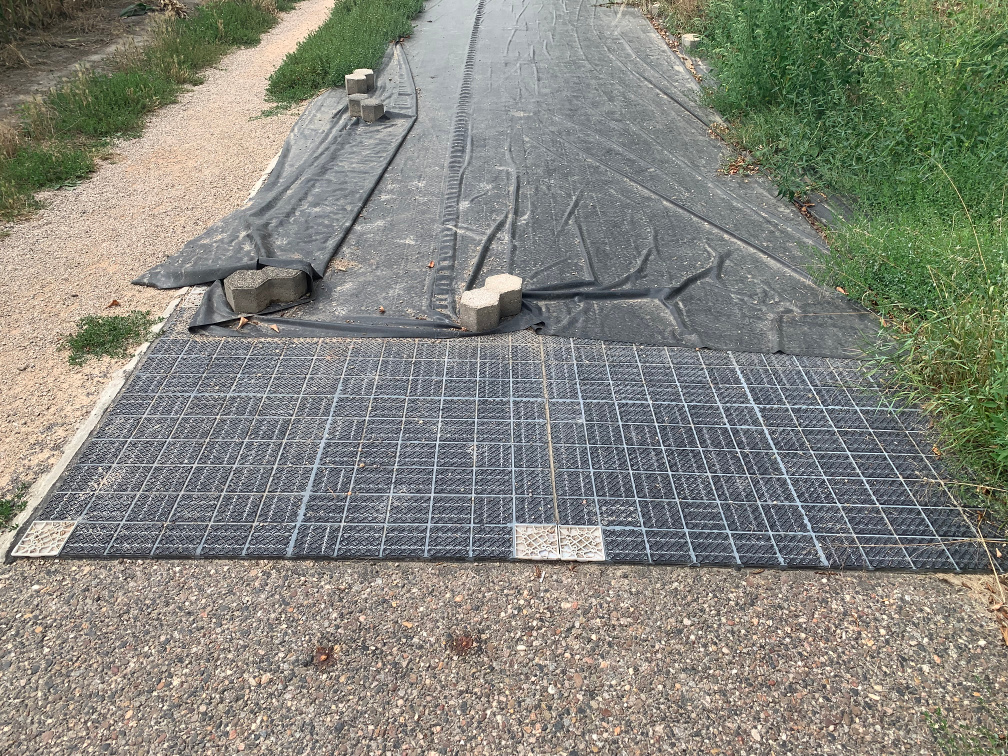
Nearby were many more houses with roofs without solar cells:

In the distance some wind turbines:

On the way home:
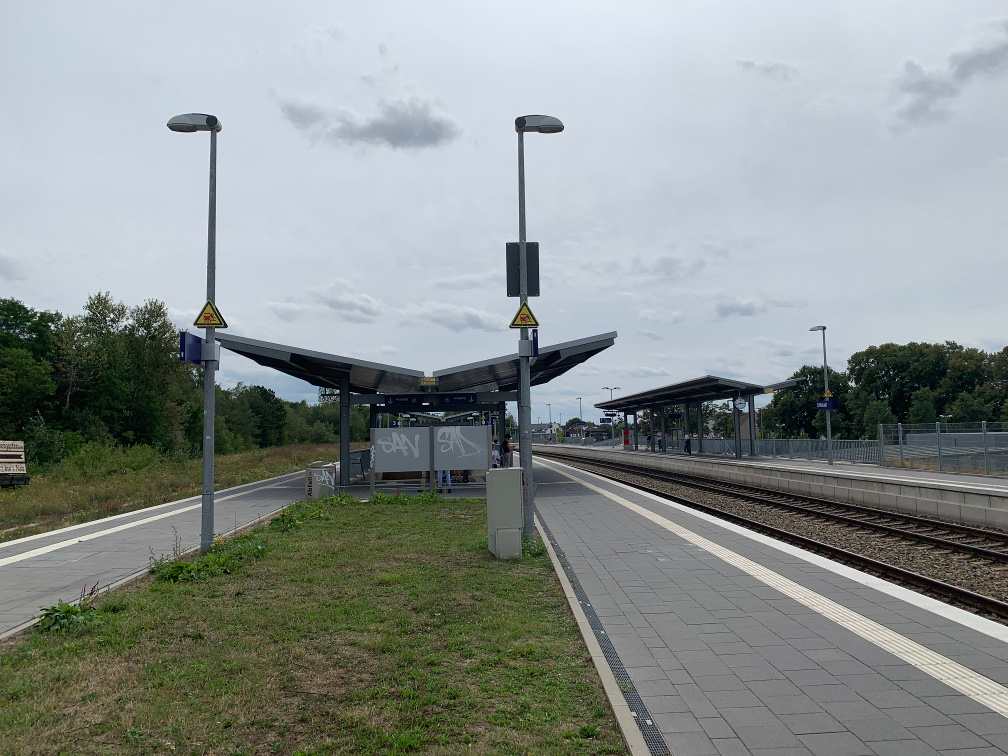
I don't think there are solar cells mounted on the roofs.
Why not some solar fricking railway station roofs?!And some more roofs:
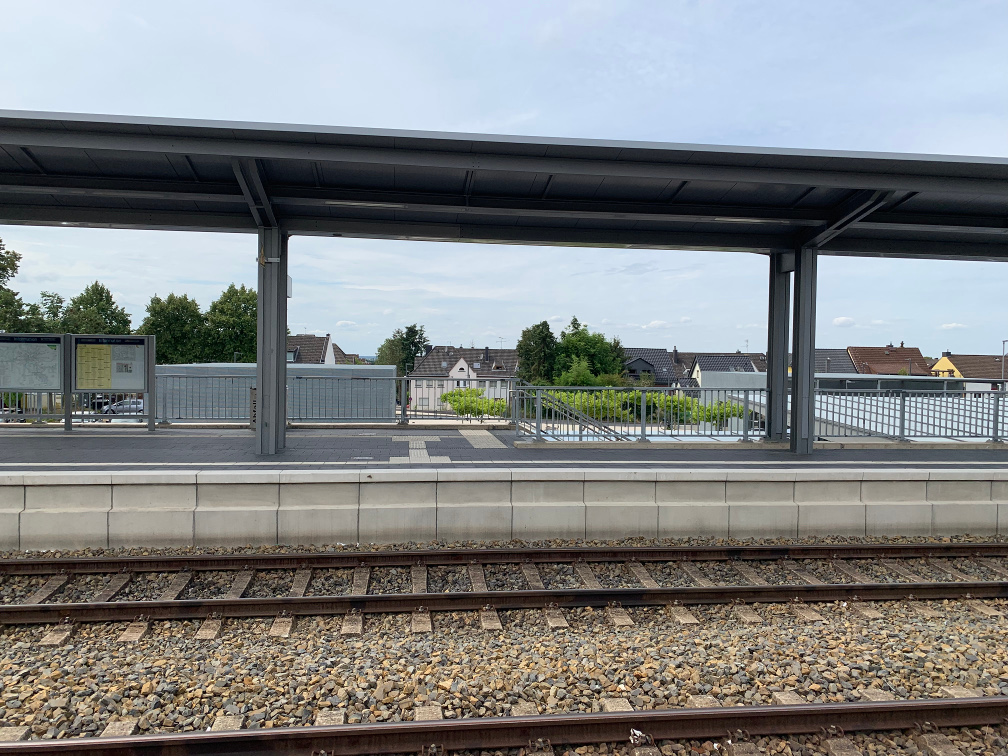
Can you spot the tiny, lonely solar cell installation? (don't search, just kidding
 February 3, 2020
February 3, 2020:
News on the website from the city about the current status: The city canceled the contract with Solmove at the end of 2019. Solmove filed a lawsuit against the city. As a temporary solution, the city laid out PVC mats over it, so that it can be used again as a way, and for conservation of evidence.
May 31, 2020: current photo of the PVC mats:
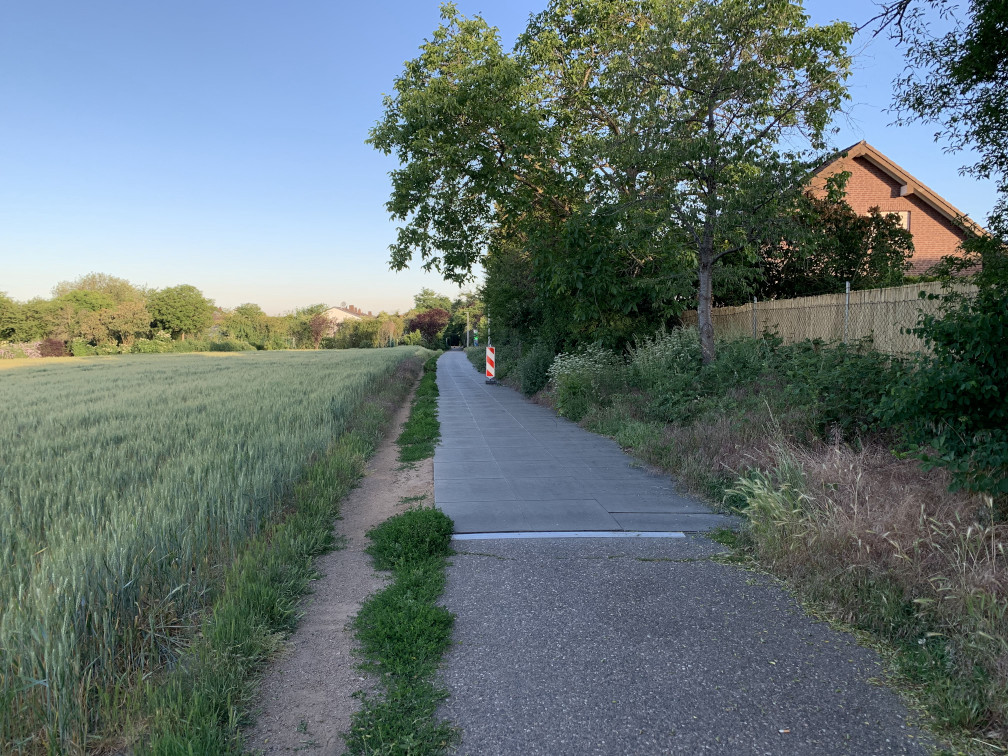
At one mat they screwed it up and they overlap. They "fixed" it with the warning sign so that nobody trips over it. Close up, which shows the mat texture and thickness:
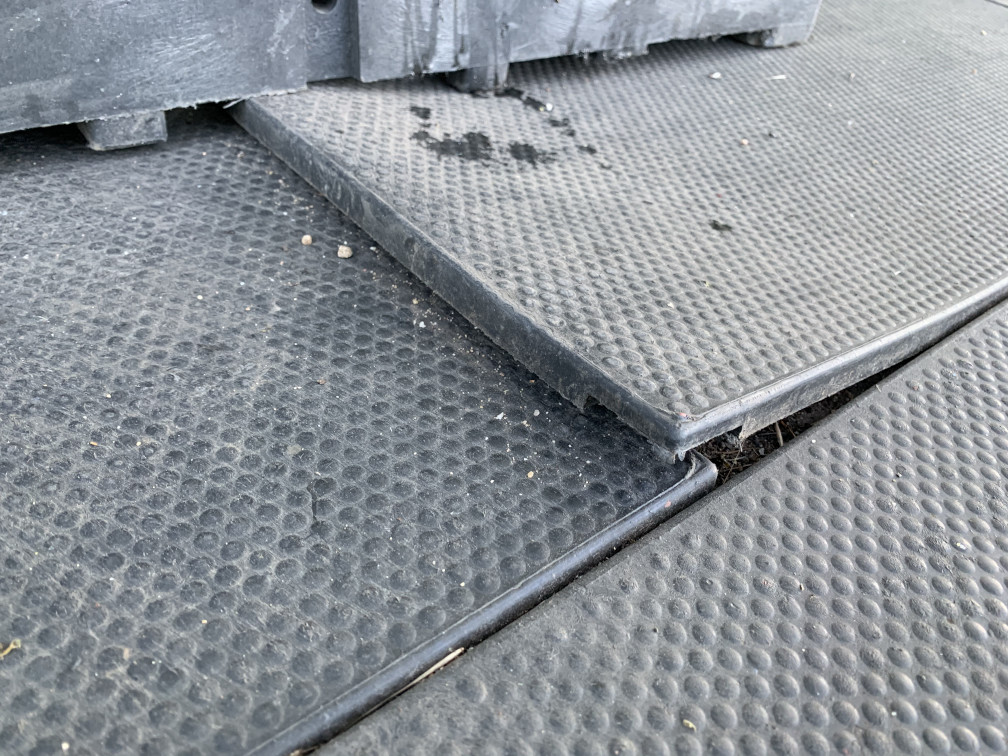
The mats are very comfortable to walk over. Similar to hard rubber, as you know it from tracks in a stadium.
Meanwhile the sign got some graffiti, looks like some people weren't amused:
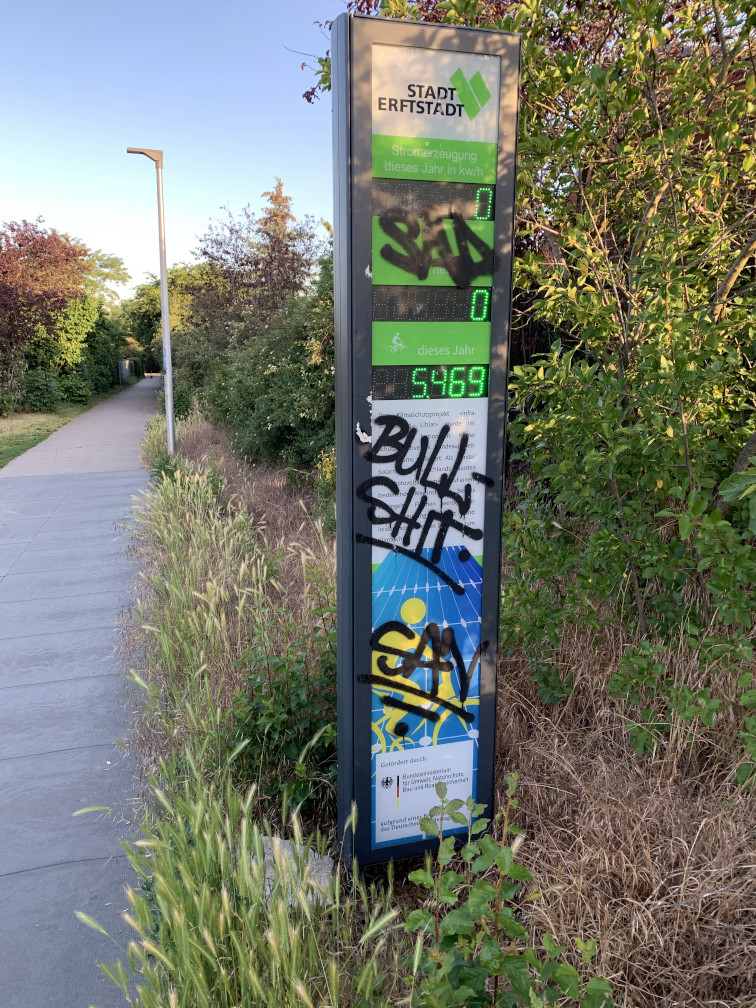
Funny angry face at the nearby train station as well:
 September 29, 2020
September 29, 2020: Donald Müller-Judex tries to get more money.
In a local kind of
reality TV show he tried to convince investors to get half a million EUR. In the TV show the investors where positive. But after the show
the deal was canceled. Due diligence failed, too expensive. Now Solmove plans a Crowdfunding campaign.
 October 31, 2020
October 31, 2020: The counter is wrapped now:
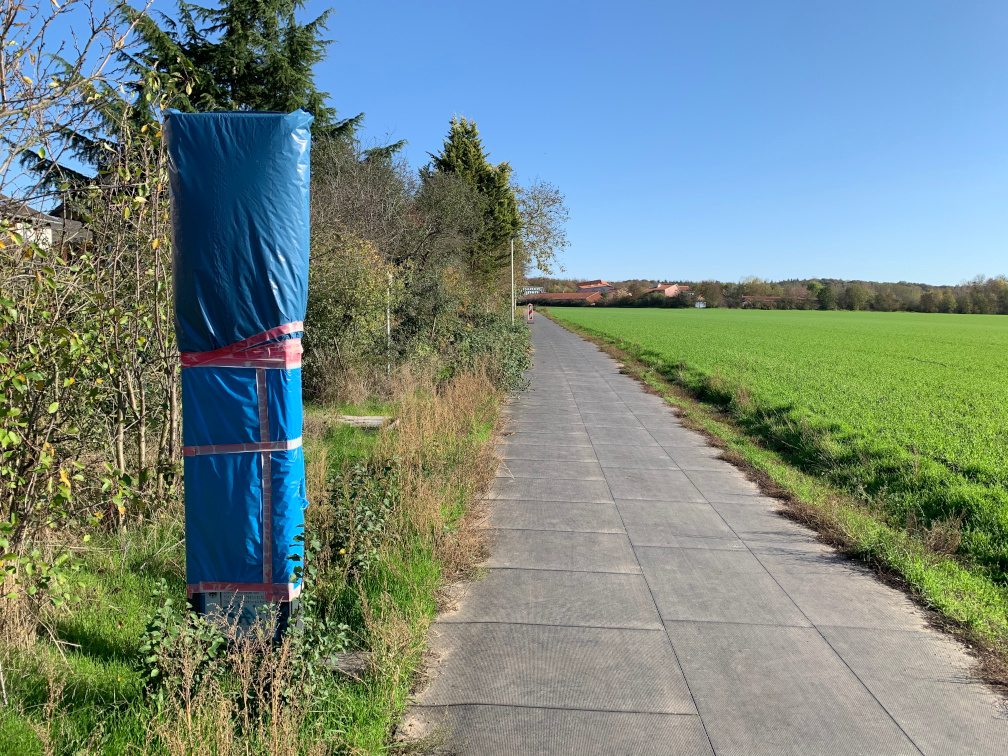 April 16, 2023
April 16, 2023: The city plans to dismantle it.
Article in a local newspaperImage from the article:
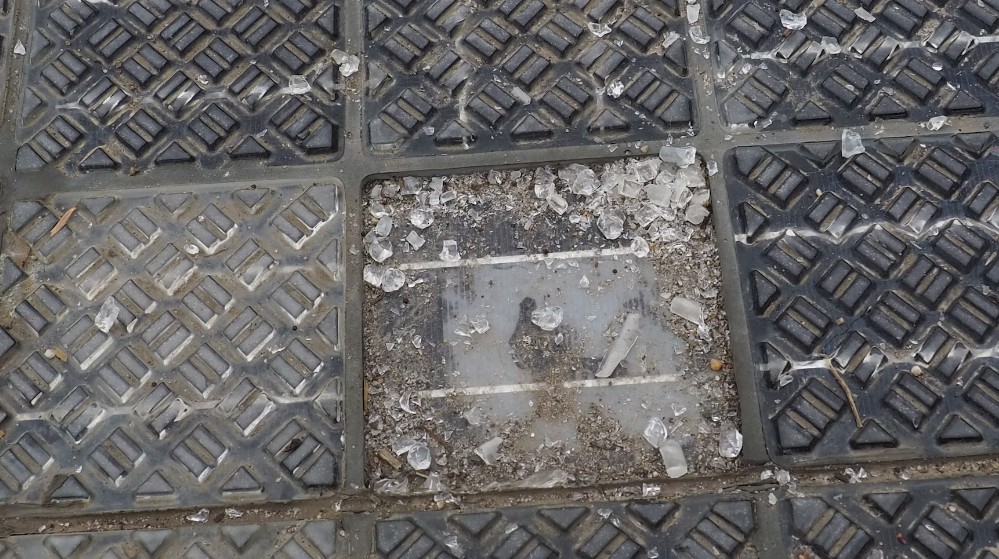 June 30, 2023
June 30, 2023: Video from today: